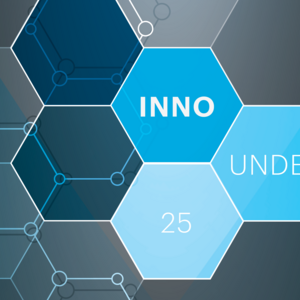
Editor's Note: This will be the first piece in a series on corporate innovation in Charlotte.
Corporate innovation centers, physical spaces that are designed to foster the development and adoption of next-gen technologies and processes, are on the rise. The number of global corporate innovation centers has nearly doubled in the past five years and many big businesses view them as a way to both avoid disruption and disrupt themselves. However, for these centers to truly work and add value to the business, they need to be more than stylish open spaces with the word “innovation” in the title.
In Charlotte, Duke Energy, Northeastern University and Ernst & Young know that a successful innovation center is about more than idea generation: It’s about balancing workplace culture, physical location and technology to empower employees.
Creating a Culture of Change
On November 21, Northeastern University held a panel discussion with Charlotte’s innovation center leaders. When discussing their individual journeys, each identified culture change as the biggest hurdle to overcome when driving employee engagement.
Dr. Raj Echambadi, Dunton Family dean of the D’Amore-McKim School of Business at Northeastern University, identified this cultural challenge as one that starts with differentiating innovation from invention.
“Innovation operates on a continuum and is different from invention,” he explains. “First, innovation is associating across concepts — taking existing elements and reimagining how to use them to achieve new things. It’s also about questioning conventional wisdom to evaluate why things are done the way they are. And finally, it’s about interacting with others and gaining different perspectives.”
Put simply, innovation isn’t about creating the next technological breakthrough. Rather, it’s about providing organizations with value-added change that results in more efficient, cost-effective, and safer processes.
“Everyone is innovative,” says Dr. Echambadi. “Anyone can move on that journey.”
Still, getting employee buy-in on this concept takes significant effort. Especially in more complex industries like nuclear energy where processes exist for the sake of safety, it can be difficult to change employees’ mindsets about “breaking the rules” to enact change.
Jody Porter, director of nuclear organizational and leadership development at Duke Energy, addresses this problem head-on through employee-led innovation trainings.
“We need to fight the cynicism that’s attached to innovation,” says Porter. “It can be difficult for employees to be innovative if they’re worried about whether or not their managers will let them be innovative. That’s why we have trainings and a reward system in place to encourage employee involvement in the innovation process.”
But shifting employee attitudes is only part of the battle when it comes to establishing an effective innovation center. Other elements like location and existing technology also factor into the center’s success or failure.
Location, Location, Location
Duke Energy’s innovation center started out with a small group in a space that didn’t provide the support they needed. Richard Donaldson, managing director of digital transformation at Duke Energy, led the charge to find a new location that could better facilitate innovative thinking.
“Our way of working emerged before we found the space that could support it,” he recalls. “But having that new location has been able to facilitate massive growth.”
According to Gensler Research Institute’s 2019 U.S. Workplace Survey, 79% of workers consider their work experiences “great” when they are afforded access to multiple settings. This same survey also showed that 43% of respondents prefer workplaces that support team-building and collaboration.
“When we brought our center to Charlotte, we needed to ask ourselves, ‘How do we create an environment that appeals to the workers of the future?’” says Bermon Painter, director of innovation and strategy for Ernst & Young Wavespace. “We found that striking a balance between open and private workspaces was important, along with accommodating specific ways in which people learn and retain information.”
At more than 30,000 square feet, Ernst & Young’s Wavespace innovation center empowers employees by balancing collaboration spaces with individual work stations. The space also offers individuals multiple ways to learn, whether it be through visual, audial, or kinetic means.
Accessing and Rethinking Existing Technologies
Encouraging and providing access to existing technologies is another must for innovation center success. As Dr. Echambadi explained, associative thinking is essential for enacting value-added change. That means leveraging existing technologies to derive at a more efficient, cost-effective, and safer way to operate.
For example, a Duke Energy employee familiar with robotics identified a way to make temperature readings in nuclear containment centers safer. Instead of sending people into the containment centers, Duke Energy leveraged his skills to create a robot capable of taking temperature readings. This sparked innovations from other team members as they realized they could use drones to perform additional tasks in these containment centers.
“We have employees who are getting their professional drones pilot license so they can go and drive these drones around the containment buildings,” explains Porter. “They’re just finding ways to do things safer, smarter, and more efficient. It’s really helping them to understand that innovation within nuclear energy is possible. And not only is it possible, but it’s necessary.”
A Generation of Innovation
It’s clear that innovation centers are not a passing trend, but rather a concept that’s here to stay. Even complex industries understand the importance of adopting innovation centers as part of their growth strategy. By creating these spaces now, they are addressing talent acquisition and employee retention for the next generation of workers.
But there’s another reason why companies should heed the call for an innovation center.
“How you breed your people has huge implications for your company,” says Dr. Echambadi. “If you ignore your employees’ ideas, they can leave you and find a place that will listen. And when that happens, the ideas you lose can ruin your organization’s success.”
Disclosure: EY is a partner of Charlotte Inno.








